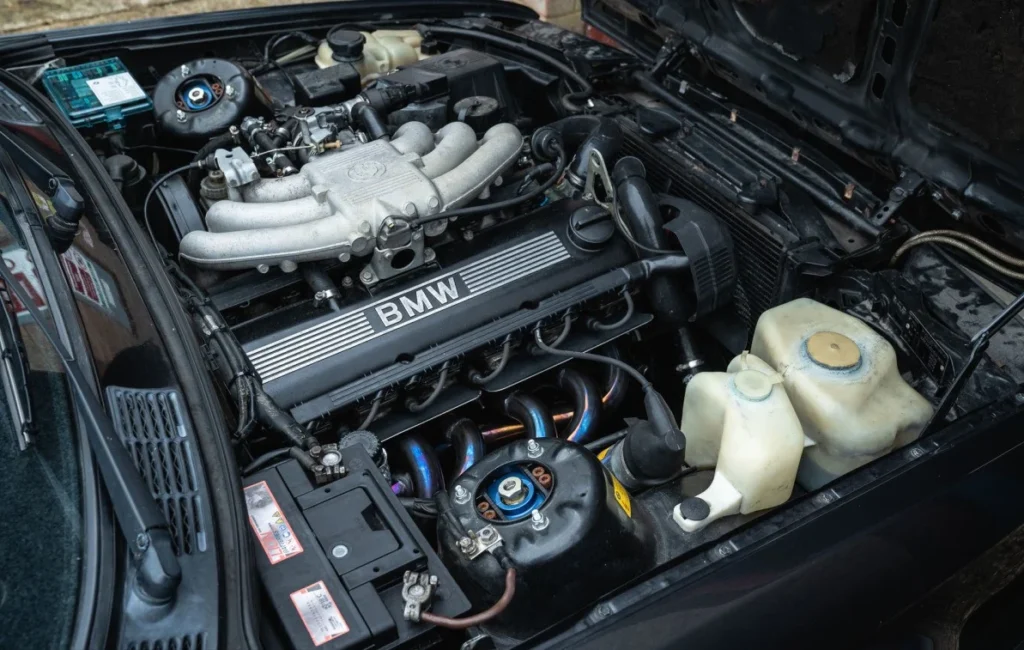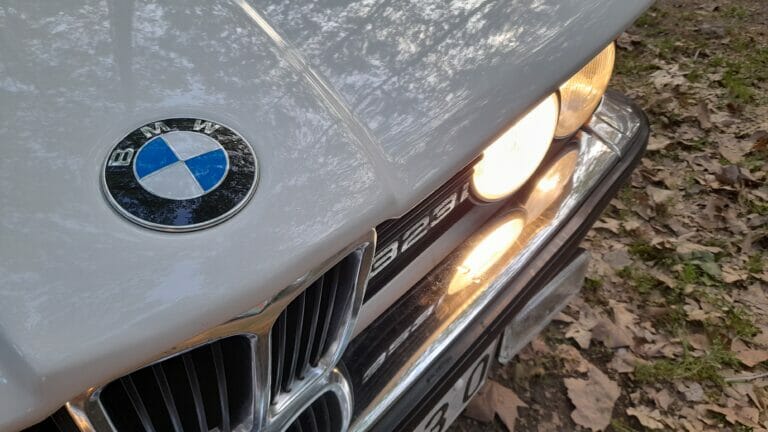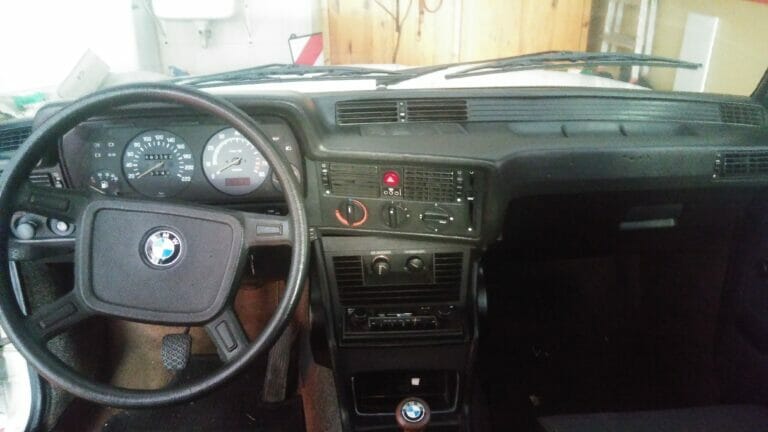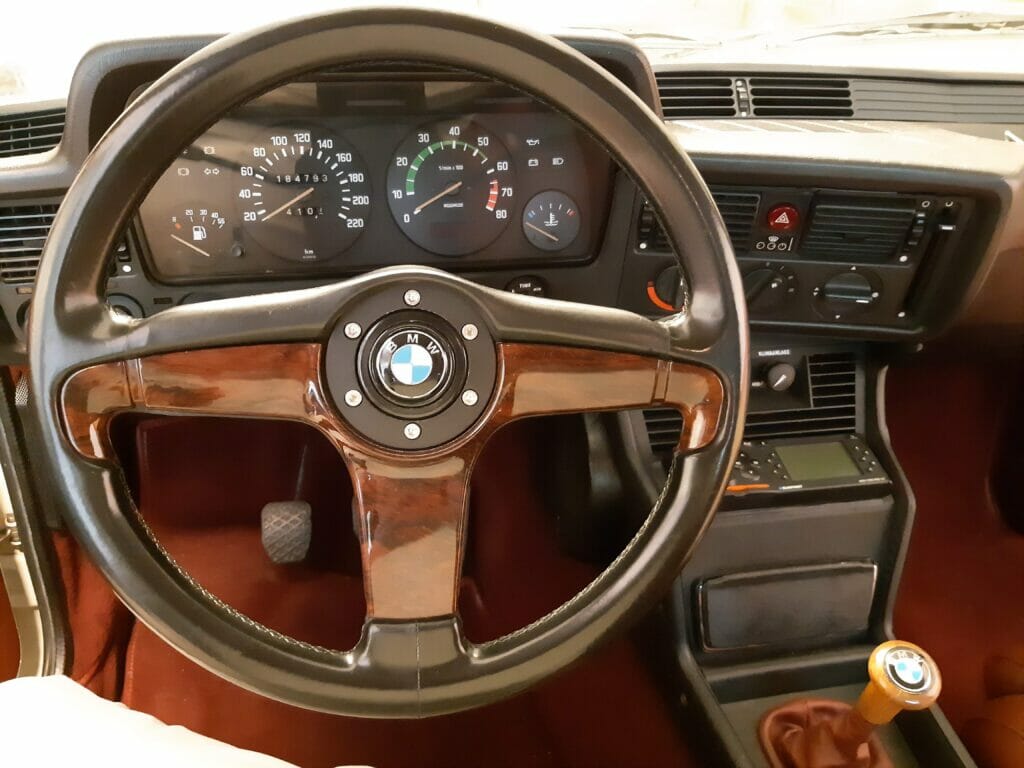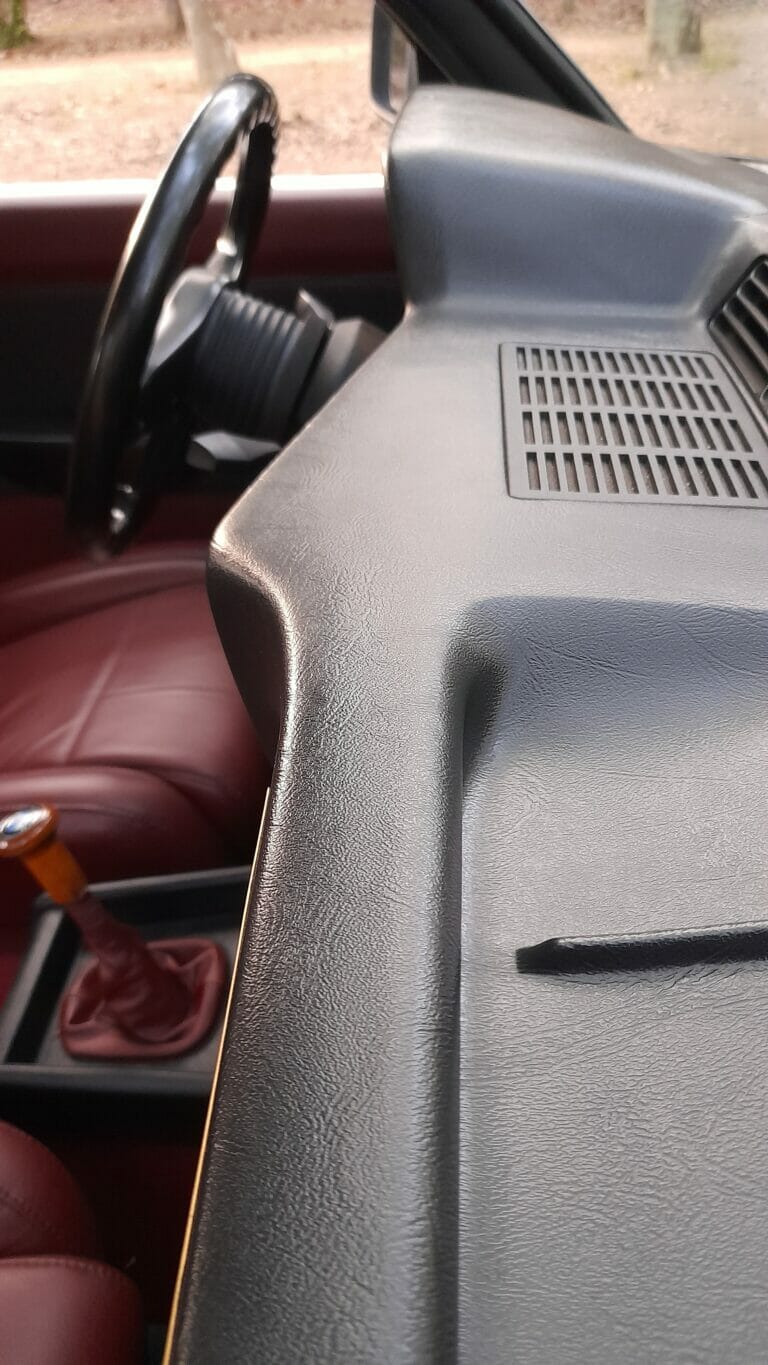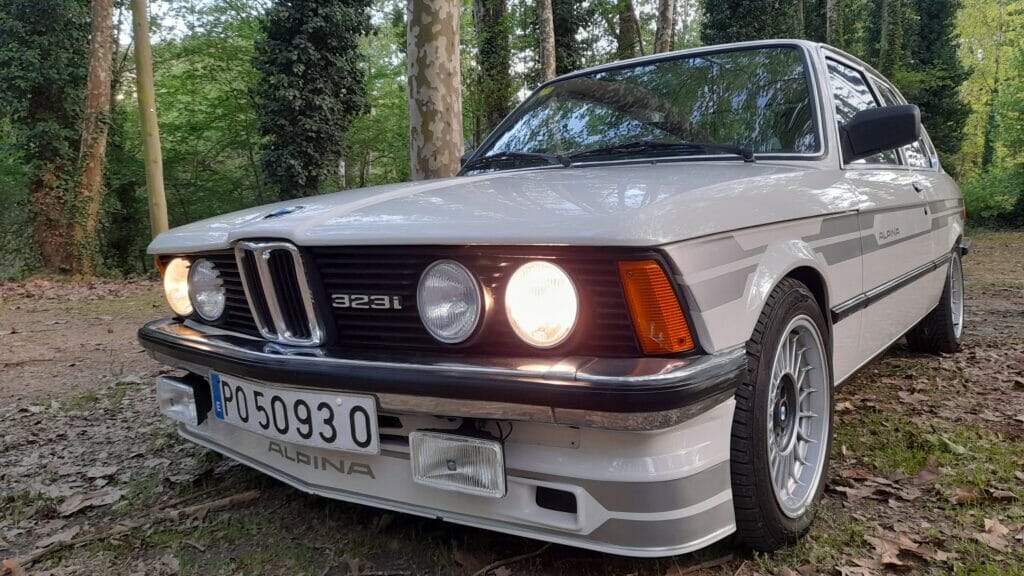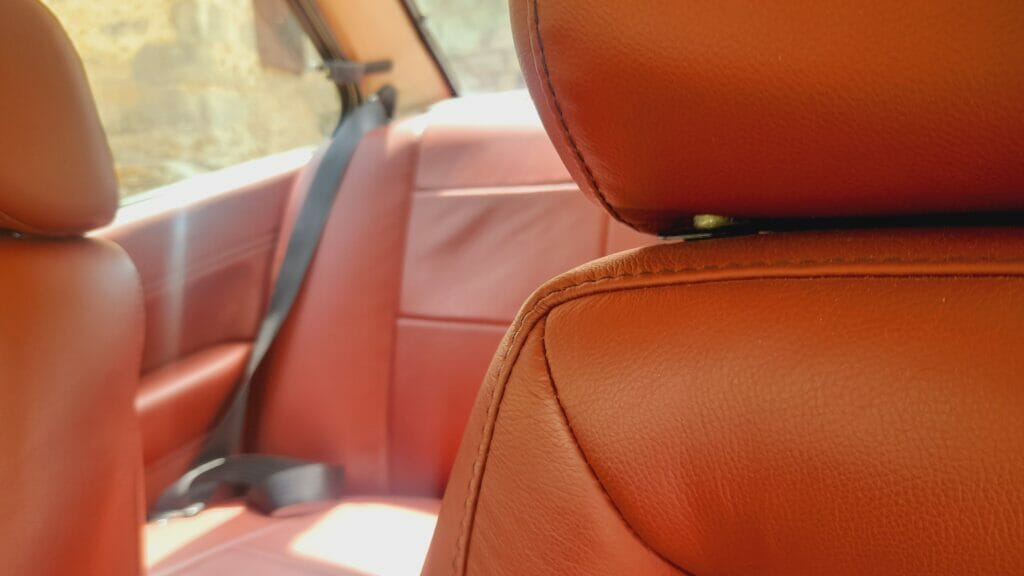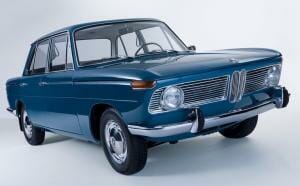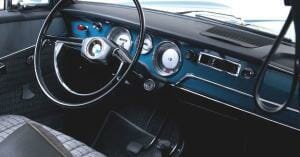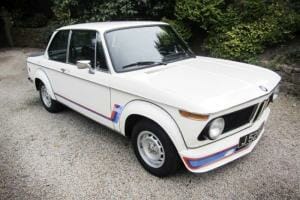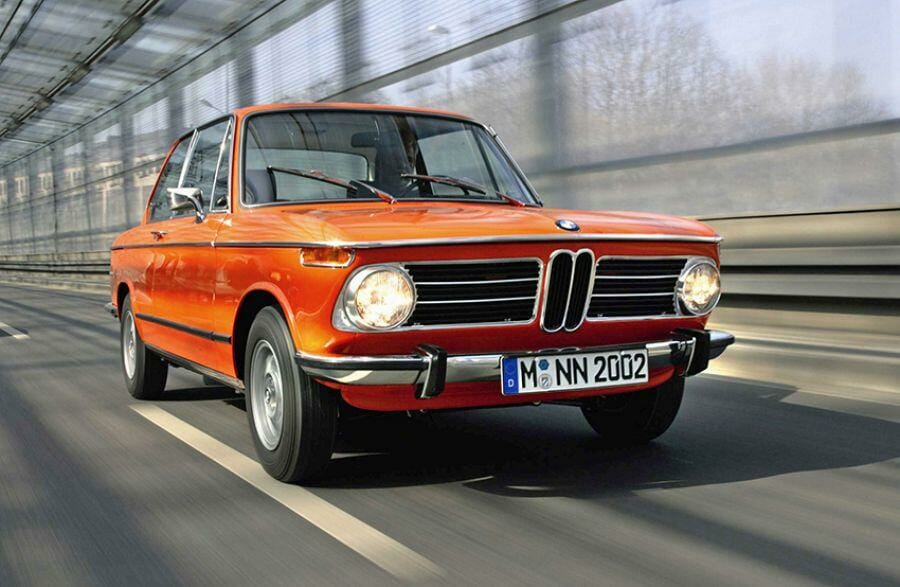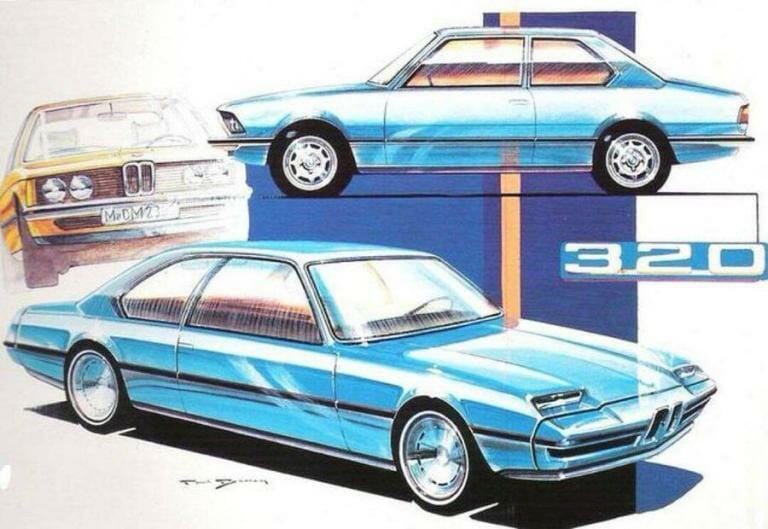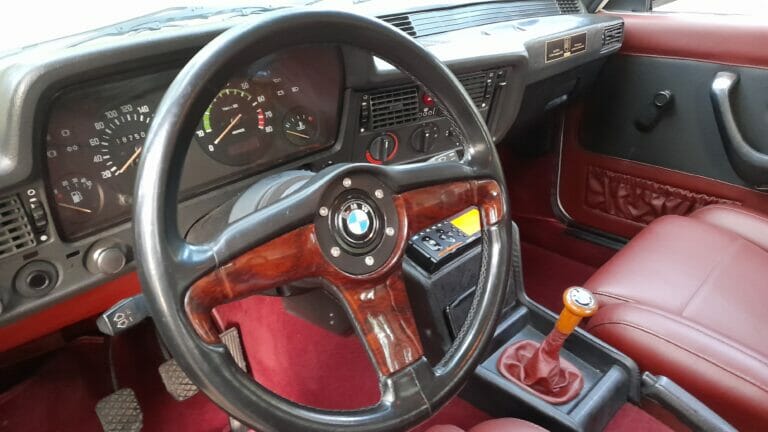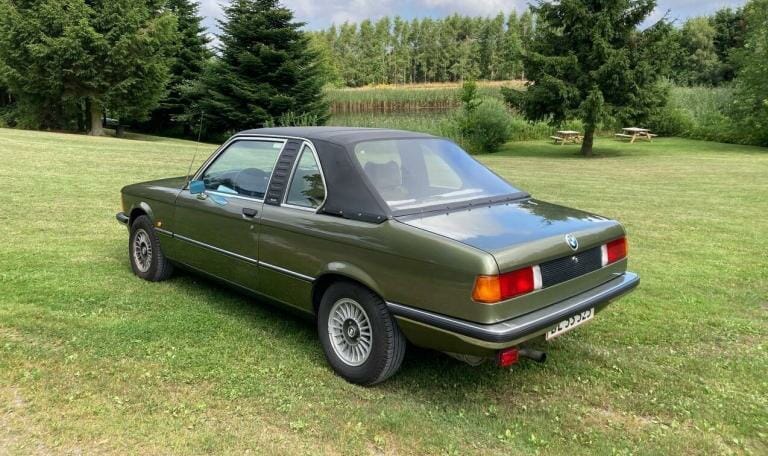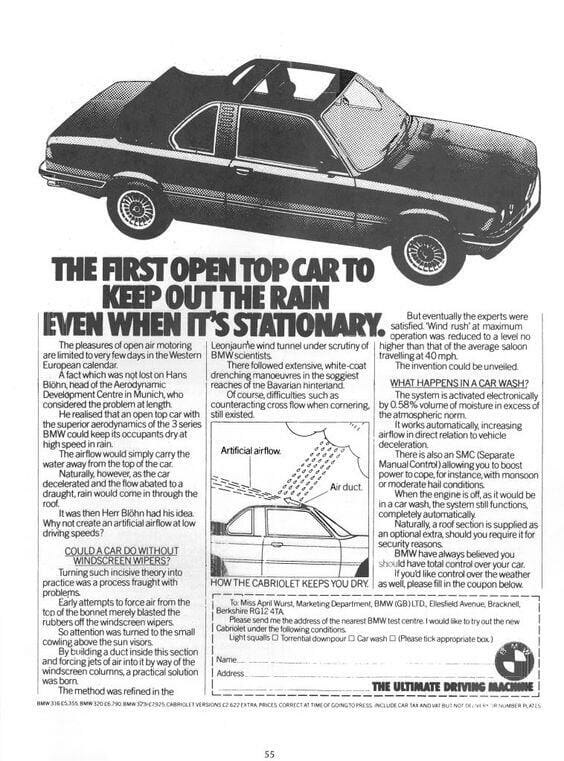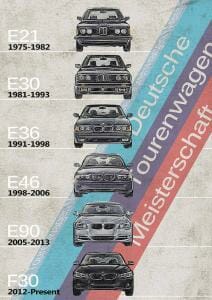Inicio » Our vehicles » BMW 323i E21
Share in:
BMW 3 Series - 323i E21
Origin: Pontevedra, Spain, June 1981
This vehicle was registered in June 1981 in Pontevedra (Galicia, Spain). Its first owner was an industrialist in the food sector in the region.
The car spent eight years with roadworthiness disabled due to rehabilitation. During this period, the body, chassis and paintwork were restored to become their current white color -the car’s first original color was metallic gray-.
After this, the car was owned by a driving professional person -actually a sport-driving instructor- in Santiago de Compostela, Spain, to be finally acquired by us in June 2018.
We kept working in the vehicle in order to reach a complete interior refurbishment. The original car’s upholstery was in fabric blue, but due to the passing of the years, it was impossible to recover it as such original (the fabrics showed a great wear due to the almost 40 years that the car had at that time). During the interior refurbishment work, like an additional extra, we were very lucky to find an extraordinary steering wheel for sale in England – a perfect combination of sportiness and elegance – made of leather and walnut wood, which replaced the original steering wheel. We also installed a Blaupunkt New York RDM 127 CD player, which although it is newer than the car (this radio is from 1996) it keeps an aesthetic very consistent with the cockpit -at least in our opinion, although we understand that this is a personal point of view-. In any case, the fact is that this is a top quality car audio equipment -even if we compare it with current standards- and shows a design very consistent with BMW interiors (important to mention that in the 90s, Blaupunkt was the official supplier of OEM audio equipment for the Bavarian brand). The set was complemented with a SONY amplifier, a Piooner subwoofer, and three pairs of JBL loudspeakers. Everything installed invisibly and reversibly -in case it’s ever needed to be uninstalled-.
Here you can see the difference in the interior of the cabin before and after our renovation work:
In addition to the interior restoration, there are many aspects of this vehicle in which we worked, mostly to the mechanical part.. Just to mention some of them:
- Replace central console.
- Change control knobs / thermostat interior air conditioning.
- Replace rev counter and overhaul dashboard lights.
- Replace clutch master/slave cylinders.
- Purge/clean coolant circuit.
- Installation of additional electric engine cooling fan.
- Replacement of all fuel supply and fuel reservoir pipes.
- Replacement of exhaust line.
- Replacement of fuel pump and ignition module.
- Underbody painting/cleaning (although it had no corrosion problem, was only an aesthetic issue).
- Replace all the headlights (the 4 ordinary headlights and the two fog lights).
- Repainting and restoration of the front grille..
In a small tribute to the Alpina variant that existed for this model, and given the color and appearance of the vehicle (when we acquired it, it was equipped with 15″ Alpina-type wheels and sport shock absorbers -both options by the way available at the time of the car if the customer wanted to purchase them-, we decided to install the complete Alpina decoration that car shows today nad you may see in the pictures. The engine is still BMW’s original 2.3i M20 6-cylinder engine, so it keeps the standard mechanics. Therefore, its 143 hp and 190 Nm of torque make it a very dynamic car to drive.
This vehicle is currently with roadworthiness up to date, and available for rent if you need it for a photo sessions, filming or exhibition. Please, feel free to contact us if you have some related need for which we will be glad to help you.
Also, if you are an owner or future buyer of one of these models and you need any information about parts, spare parts, or technical information you may need, please contact usbecause we will be happy to share it with you.
BMW 323i E21. Photo album. Click on the category:
Medium-term plan for our BMW 323i
In the medium term, we have plans to improve this vehicle. This particular unit used to have installed air conditioning as standard, and the entire interior of the car’s installation is still complete. Also, the compressor is still there and in fact, besides some small material, only the condenser and two pipes are missing. If we do not find such condenser as standard OEM, we will be able to have it manufactured by a specialist(Radiadores Soler, for example, is one of them) so we plan to hopefully have the air conditioner operational again.
Two improvements we also have on the pipeline are:
- The complete replacement of the cylinder head (we already have a completely restored one, rectified in the shop, with new valves, seals, and new overhauled camshafts). Then we will take the opportunity to make a complete “overhaul” of the whole engine.
- The power steering installation: We were really lucky to find a hydralic power steering rack for this original BMW car -it existed as an option but very rare to find owadays- and we plan to install it (obviously together with the corresponding hydraulic pump and pipes, parts that can still be found new from the BMW dealer).
BMW 323i E21 - History
The part of BMW’s history that impacts -directly or indirectly- the 3 series, could be said that it started in 1959. That was a bad year for the company. Due to the drop in sales of its high-end BMW 501 model and the low commercial margins of its smaller models, BMW came close to financial bankruptcy and absorption by its competitor Daimer Benz. And it was in that year that Herbert and Harald Quant, sons of German businessman Günther Quandt, acquired a majority stake in the company, which generated an injection of capital that enabled the company to refloat and maintain itself as an autonomous entity. It was at that time that the small 700 model was released, followed by the commercially successful BMW 1500 sedan, products that saved the company.
In 1962, with the New Class Sedan product line BMW began to recover its reputation as a manufacturer of sports-oriented cars.
During the 1960s a few coupe models were released, followed by the 6 series (1968) and, from 1966, the 02 series (1502, 1602, 2002). And it’s at the end of the commercial life of the 02 series, when BMW considered its modernization, presented in June 1975 in Munich the new 03 series, called E21.
BMW 3 series E21 : The heritage of the 02 series and the E12 series
The E21 owes its shape to Paul Bracq, being the design possibly a mix between the 2002 re-styling, and the kidney grilles of the BMW E12 5 Series.
Whatever the perspective you use to see it, the car had some well-defined characteristics, which were going to be forever in the future associated with the 3 Series, even until today: good performance, sportiness, a very careful design – and a certain exclusivity – and in short, the idea of “a car to be driven” as the basic concept of the product.
Console turned to the driver
The BMW 3-series was the first car in which the center console was directly oriented towards the driver. This feature transmitted the product image that it was a car designed “to be driven” or in other words, the vehicle and its driver were one and the same thing.
This characteristic has become one of the identity signs of BMW cars, and has not only remained up to nowadays, but has been replicated by many other manufacturers.
BMW E21 : Powertrains and mechanics
The BMW 3-series E21 originally had four-cylinder engines in versions 1500 1600 1800, 1800i , 2000, 2000i (with the engine called M10, which provided performances of 75, 90, 98, 105, 109, and 125 hp). This engine was already present in previous 02 series models. But since the E21 was a heavier car than its predecessor, the new models showed poorer performance compared to their 02 counterparts of the preceding decade.
This is why BMW developed the M20 engine, an inline 6-cylinder which, although similar to the engines of the brand’s larger sedans, was developed as a lighter and more compact version capable of being housed in the chassis of the 3 Series. This engine had two versions, a 1990 cc version powered by a Solex 4A1 carburetor , and a 2318 cc version powered by the Bosch K-jetronic injection system.
The brakes were power-assisted, rotor/drum brakes, except for the 323i version, which was equipped with four-wheel rotor brakes.
There were four possible available transmission types:
- 4-speed gearboxes
- ECO (or OVERDRIVE) 5-speed gearbox – which is simply the classic gearbox with a ratio of less than 1 for 5th gear
- 5-speed SPORT gearbox (first gear backwards and a 5th gear with 1:1 ratio)
- 3-speed automatic gearbox.
Two different versions of the BMW E21 existed, irrespective of the trim level and engine:
- The 1st version until 1979
- The 2nd version from 1979 to 1983.
The differences were basically aesthetic, with version 2 showing external to black mirrors instead of chrome, slight changes to the interior center console (heating unit knobs), the replacement of the analog clock with a digital one, some new upholstery options and some changes to the front grille.
The base model was a bit under equipped in terms of extra options, but if the customer was willing to pay for such extras, many different options were available: Recaro seats, sports steering wheel, front/rear spoiler, special suspensions sport shock absorers, sports tires, locking differential, air conditioning, or steering assistance (hydraulic), among others, were available on request, upon additional payment.
Targa convertible body: The BMW E21 Baur
BMW: The ultimate Driving Machine
“The ultimate Driving Machine”:. Nowadays (almost) nobody debates – besides personal preferences – the quality and performance of BMW vehicles. The Bavarian brand is considered a premium brand, and for many years it has had a reputation as a manufacturer of vehicles that combine quality, refinement, performance and the latest features in safety. All these points were already emphasized in all advertising campaigns around the BMW 3-series since the very first one, the E21. The potential buyer was promised a unique experience, combining luxury and sportiness, being highlighted the vehicle’s active and passive safety.
The design of its bodywork was worked so that the passenger compartment would become an undeformable cell (we must consider that we are talking about a design of 1975), the car incorporated an independent suspension to all four wheels (including the rear, something not very common at the time, and even less so in rear-wheel drive cars for which most of them used to have a rigid axle on those years), very powerful brakes, and a very balanced weight distribution, features that made it a very safe vehicle in the standards of those years.
BMW’s advertising messages were really incisive: In the examples below, you can see how BMW claims things such usthere are competitors who declare that their products are “just like a BMW”.. And of course the advertising messages encourages the buyer to not to stick to imitations “as if it were a BMW” but to go for the genuinebut go for the genuine and original BMW product. Publications with phrases such as “The car for real drivers“, or “No need to deal with your family to own a sports carThe “BMW 3 Series” showed that BMW, with the 3 Series, was determined to show the image of a high-performance car, despite its compact size.
The slogan THE DEFINITIVE DRIVING MACHINE, which the Munich manufacturer created, showed, with no doubt, how far the brand’s image was betting on with the BMW 3-series E21.
Comparative advertising: BMW even used to the technique of “comparative advertising” to show the performance of its 3-series vehicles against the competition. In the following videos I invite you to see the comparisons that BMW makes with other models of German brands in order to show the excellence of the E21. The videos are in German, although the first video, the longest of the four, has subtitles available.
Two interesting videos in Spanish: I show you here two reports around the BMW E21: the first is the video of Santi Martinez from the channel “Documentos del motor” (I recommend it if you don’t know it) and the second from the BMW club of Uruguay. Both are excellent:
The overpowered versions of the BMW E21
In the 3 series E21, there was not (yet) the M variant. However, there were several car and motor companies who reached to homologate and offer some overpowered versions of the model, even when the buyer had to pay an amount of money that at least doubled the standard price of the standard model. Special mention should be made of the Alpina tuner that offered a version called C1 2.3 with 170hp and a more powerful B6 2.8 with 200hp. The mechanical preparation was provided also with a special interior upholstery and an aesthetic part that included wheels, steering wheel, anagrams and a particular Alpina paint scheme.
Another one of the best known overpowered versions are those of Hartge: Using 3000 or 3500cc engines – coming from the BMW 5 or 7 series – they reached 218 hp of power, although keeping in this case, a discreet and sober aesthetics.
And still a third, less known variant is the Schnitzer Turbo.This was based on a 1500 M10 four-cylinder engine, with turbo, which achieved a top speed of 225 km/h (compared to 190 km/h of the standard 323i) and an acceleration from 0 to 100 km/h in just over 6 seconds, compared to 9.5 seconds of the standard 323i, even having reached in some extreme preparations of competition units with more than 500hp.
BMW E21 : The legacy
The 3-series E21 appeared in 1975. It was born as a redesign (or even we can say “an extension”) of the 02 series. The conceptual idea was to make a car that combined exclusivity, quality and comfort with sportiness, all in a compact size vehicle. This “sports sedan” concept resulted to be so successful that BMW has continued the 3-series saga until nowadays (E30, E36, E46, E90, F30, F80) and still remains a real reference for high-quality, sporty and performance sedan cars.
The BMW 3-series E21 was discontinued in 1983 to give way to the E30 series, after having sold more than one million units.

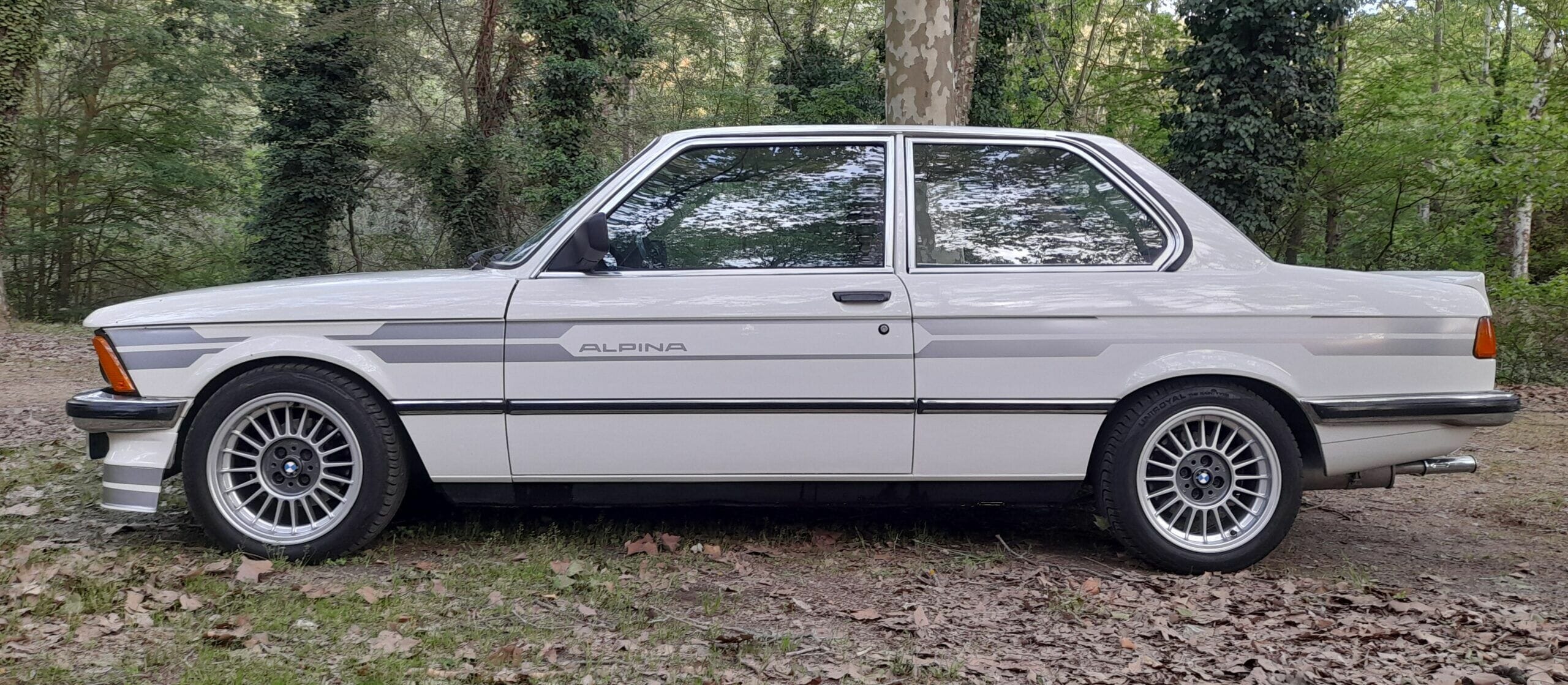
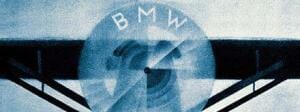
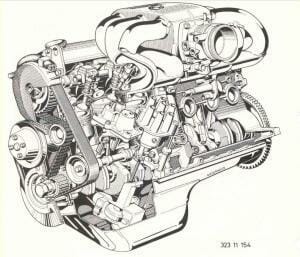 Includes engine parts torque information
Includes engine parts torque information